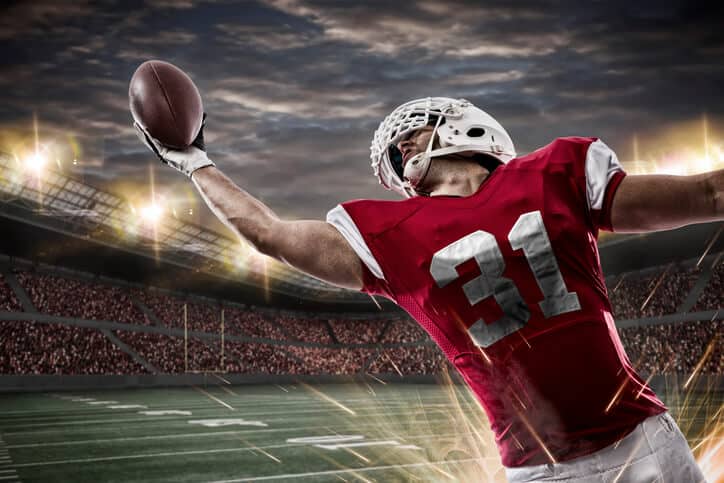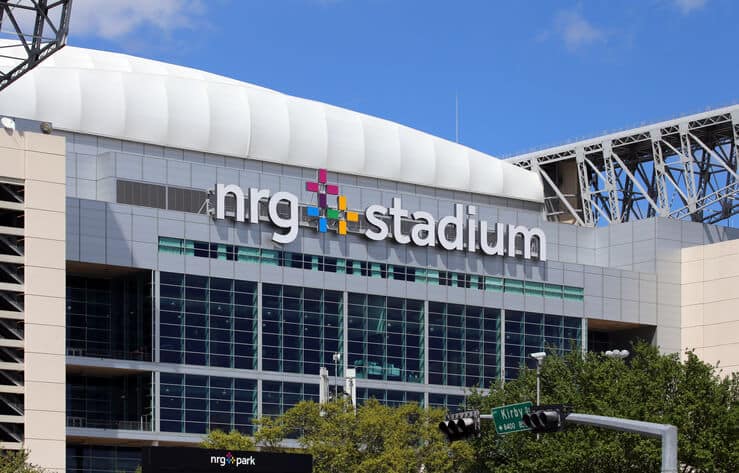With the 51st edition of the Super Bowl scheduled for this Sunday, we thought it would be fun to look deeper at the big game. We provide you a list of all the past hosts and we also look at the NFL’s Drug Testing Policy and its regulations. Has your favorite team or player been impacted? Hopefully not, but we can all agree on one thing. The food, the friends and the family is what makes this weekend so special!
NFL Drug Testing Facts
- The substance that NFL players tested positive for the most frequently was adderall.
- Players who are outside the intervention program (those who have never failed a test), are only tested once per year. ALL samples are provided under direct observation procedure.
- Teams, fans and colleagues are not informed of a player’s first violation. Team doctors are aware because of cross-medication concerns, but the public is only made aware when a player is suspended after numerous violations.
- Marijuana is treated less severely than PED’s and other substances. A player needs to test positive for marijuana more than 4 times for a suspension to be considered.
Super Bowl Cities
With the big game scheduled for this Sunday, we wanted to provide you a list of all the Super Bowl sites since the game’s inception in 1967:
- I Los Angeles Memorial Coliseum– Green Bay 35, Kansas City 10
- II Orange Bowl (Miami)– Green Bay 33, Oakland 14
- III Orange Bowl (Miami)– New York Jets 16, Baltimore 7
- IV Tulne Stadium (New Orleans)– Kansas City 23, Minneosota 7
- V Orange Bowl (Miami)– Baltimore 16, Dallas 13
- VI Tulane Stadium (New Orleans)– Dallas 24, Miami 3
- VII Los Angeles Memorial Coliseum– Miami 14, Washington 7
- VIII Rice Stadium (Houston)– Miami 24, Minneosota 7
- IX Tulane Stadium (New Orleans)– Pittsburgh 16, Minneosota 6
- X Orange Bowl (Miami)– Pittsburgh 21, Dallas 17
- XI Rose Bowl (Pasadena, California)– Oakland 32, Minneosota 14
- XII Superdome (New Orleans)– Dallas 27, Denver 10
- XIII Orange Bowl (Miami)– Pittsburgh 35, Dallas 31
- XIV Rose Bowl (Pasadena, California)– Pittsburgh 31, Los Angeles 19
- XV Superdome (New Orleans)– Oakland 27, Philadelphia 10
- XVI Silverdome (Michigan)– San Francisco 26, Cincinnati 21
- XVII Rose Bowl (Pasadena, California)– Washington 27, Miami 17
- XVIII Tampa Stadium– Los Angeles 38, Washington 9
- XIX Stanford Stadium– San Francisco 38, Miami 16
- XX Superdome (New Orleans)– Chicago 46, New England 10
- XXI Rose Bowl (Pasadena, California)– New York Giants 39, Denver 20
- XXII Jack Murphy Stadium (San Diego)– Washington 42, Denver 10
- XXIII Joe Robbie Stadium (Miami)– San Francisco 20, Cincinnati 16
- XXIV Superdome (New Orleans)– San Francisco 55, Denver 10
- XXV Tampa Stadium– New York Giants 20, Buffalo 19
- XXVI Metrodome (Minneapolis)– Washington 37, Buffalo 24
- XXVII Rose Bowl (Pasadena, California)– Dallas 52, Buffalo 17
- XXVIII Georgia Dome (Atlanta)– Dallas 30, Buffalo 13
- XXIX Joe Robbie Stadium (Miami)– San Francisco 49, San Diego 26
- XXX Sun Devil Stadium (Arizona)– Dallas 27, Pittsburgh 17
- XXXI Superdome (New Orleans)– Green Bay 35, New England 21
- XXXII Qualcomm Stadium (San Diego)– Denver 31, Green Bay 24
- XXXIII Pro Player Stadium (Miami)– Denver 34, Atlanta 19
- XXXIV Georgia Dome (Atlanta)– St Louis 23, Tennesse 16
- XXXV Raymond James Stadium (Tampa)– Baltimore 34, New York Giants 7
- XXXVI Superdome (New Orleans)– New England 20, St Louis 17
- XXXVII Qualcomm Stadium (San Diego)– Tampa Bay 48, Oakland 21
- XXXVIII Reliant Stadium (Houston)– New England 32, Carolina 29
- XXXIX Alltel Stadium (Jacksonville)– New England 24, Philadelphia 21
- XL Ford Field (Detroit)– Pittsburgh 21, Seattle 10
- XLI Dolphin Stadium (Miami)– Indianapolis 29, Chicago 17
- XLI Phoenix Stadium (Arizona)– New York Giants 17, New England 14
- XLIII Raymond James Stadium (Tampa)– Pittsburgh 27, Arizona 23
- XLIV Sun Life Stadium (Miami)– New Orleans 31, Indianapolis 17
- XLV Cowboys Stadium (Arlington)– Green Bay 31, Pittsburgh 25
- Lucas Oil Stadium (Indianapolis)– New York Giants 21, New England 17
- Mercedes-Benz Superdome (New Orleans)– Baltimore 34, San Francisco 31
- Metlife Stadium (New Jersey)– Seattle 43, Denver 8
- Phoenix Stadium (Arizona)– New England 28, Seattle 24
- Levi Stadium (California)– Denver 24, Carolina 10
National Drug Screening Testing Centers
Super bowl LI (fifty-one) is set to be played at NRG Stadium in Houston, Texas. This is the first time the stadium will host the game and it will be the third time that the game is going to be played in Houston. While our home state of Florida has played host to the most Super Bowls, Texas is certainly big enough for the BIG game. But did you know that Houston is actually the city where NDS has the most drug testing centers? We also have centers in the following Texas cities»
- Arlington
- Austin
- Beaumont
- Brownsville
- Corpus Christi
- Dallas
- El Paso
- Fort Worth
- Laredo
- San Antonio
- And More!
Under Texas state law, there is almost no restrictions for drug testing when it comes to private employers. We offer MRO services, training services, testing for individuals and Drug-Free Workplace trainings all through the lone star state. Enjoy the game and let us know if you have any questions!
AN INSIDE LOOK AT THE NFL’S DRUG TESTING POLICY

Everyone dreads seeing that breaking news ticker come across the screen revealing that another one of their favorite players has failed a drug test. Just like any business, the NFL has the right to drug test its employees as long as both parties have agreed upon the terms in which that testing is going to take place.
The NFL has been testing for marijuana since 1971, long before the league started implementing a PED protocol. Back in those days, the effects of marijuana were still being figured out and businesses wanted it eliminated completely. Nowadays, employers struggle with medical marijuana policies given the continued legalization of the substance across the United States.
The league suspends all repeated offenders regardless if the substance is for medical use or not. If they are not in the ‘intervention program,’ the player will only be tested once a year at random. If a player has tested positive enough times to enter the program, he will be tested at random, multiple times a year with little to no warning. Some businesses are not this lenient. If it is in the employee’s contract, the employer has every right to terminate employment after a single positive test.
Compared to other drugs, the fines and consequences for marijuana use are far less strict. A single positive test results in a small fine and no suspension. A second positive test results in a larger fine and one game suspension that is subject to appeal. A third offense forces the player to enter the ‘intervention program.’ They are also suspended four games without pay and fined a steeper amount.
Drug testing has advanced since the 1970’s and that isn’t good news for people trying to get around the system. Employers like the NFL are cracking down on users in an effort to maintain a drug-free workplace. With the help of National Drug Screening, employers all across the United States are getting closer to that goal.
To learn more about our services, call National Drug Screening at 866-843-4545 or click around on our website.







